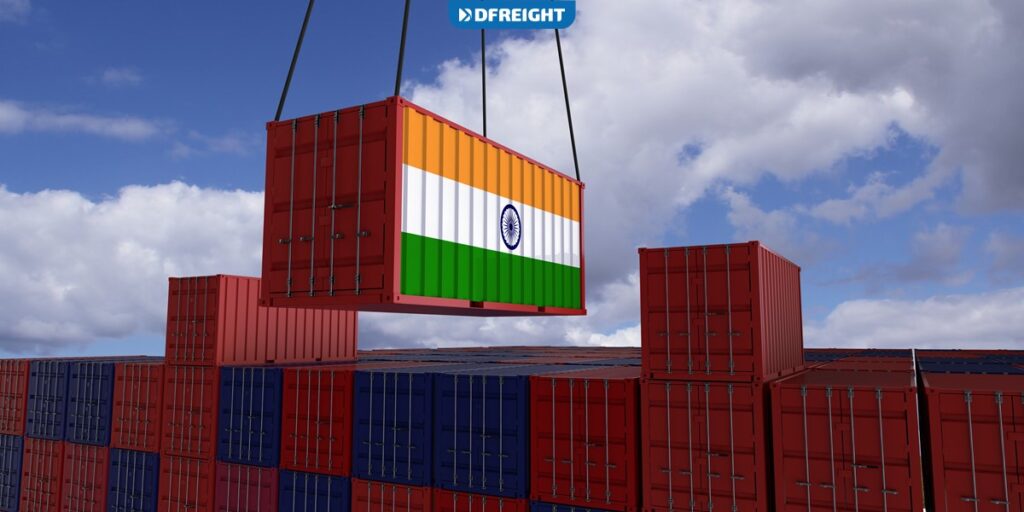India is a central hub of maritime trade. The country’s long coastline, numerous ports, and large merchant fleet make it one of the world’s leading maritime nations. India’s naval trade dates back to the time of the ancient Silk Road when Indian spices and textiles were in high demand in China and other parts of Asia.
Today, India’s ports handle a large cargo volume, and the country’s merchant fleet is one of the largest in the world. India is also a major player in the global shipping industry, and its shipyards build a significant number of the world’s merchant vessels.
India’s top 10 busiest ports handle about 60% of the country’s total cargo. India’s busiest ports are located along its 7,517-kilometre-long coastline. These ports play a vital role in the country’s economy as they handle a large trade volume.
Table of Contents
Mundra Port, Gujarat
Mundra Port is located on the northwest coast of India in Gujarat. It is the largest private port in India and the port with a direct rail link to the hinterland. The port handles a variety of cargo, including containers, dry bulk, and break bulk.
It has 10 berths dedicated to dry bulk and three to liquid bulk, while six berths serve containerized cargo. The port also boasts the world’s largest coal import terminal, with an annual capacity of 40 million tons.
Mundra Port was initially developed as a deep-water port by Adani Ports and Special Economic Zone Limited (APSEZ), a subsidiary of the Adani Group, in 2001. The port has since undergone a significant expansion, and today it is the largest private port in India, with a capacity of 60 million tons per annum (MTPA).
Mundra Port is well-connected to the hinterland via a dedicated rail link. It is the only port in India with a direct rail link to the hinterland, which enables it to handle large volumes of cargo efficiently.
The port has a dedicated container terminal, which can handle up to 1.5 million TEUs per annum. It also has a multi-purpose terminal, which can handle a variety of cargo, including dry bulk, break bulk, and containers.
Kandla Port, Gujarat
Kandla Port is one of the ten major ports of India. It was constructed in the 1950s, and its a major port in Gujarat located on the Gulf of Kutch. The port is a hub for trade with Pakistan and the Middle East. The port has a draft of 12 meters and can accommodate vessels up to 200,000 DWT.
The port is also the busiest in India for cargo handling. It handles a variety of cargo, including petroleum products, chemicals, fertilizers, grains, and minerals. The port has berths for oil, containers, and general cargo. There is also a dedicated liquefied natural gas terminal.
Kandla Port is connected to the Indian rail network and has a dedicated container terminal. The port has a 24-hour turnaround time for vessels.
Nhava Sheva Port, Maharashtra
Nhava Sheva Port, also called Jawaharlal Nehru Port, is the largest container port in India. Located on the country’s west coast in the state of Maharashtra, the port is accessible to ships from all over the world. Nhava Sheva Port is the gateway to India’s trade with the Middle East, Africa, and Europe.
The port is operated by the Jawaharlal Nehru Port Trust (JNPT), a government-owned organization. The port handles both domestic and international cargo. The port has five container terminals, four of which private companies operate. The fifth terminal, operated by JNPT, is the largest of the five terminals.
The port also has a dedicated terminal for handling automobiles. The port has a total of 27 berths, with a depth of 15 meters. The port can handle 4.5 million TEUs of cargo per year.
The port is connected to the Mumbai-Pune Expressway and the Mumbai- Ahmedabad National Highway through a dedicated road. The port is also connected to the Indian Railways network, with a dedicated rail line connecting it to the Mumbai suburban railway network.
Chennai Port, Tamil Nadu
Chennai Port is the largest artificial harbor on the east coast of India and the second-largest port in the country. It is also one of the oldest ports, established in 1881. The port is located in the city of Chennai, Tamil Nadu, and is administered by the Chennai Port Trust.
The port handles a wide range of cargo, including containers, vehicles, petroleum products, and other general cargo. It is also a central hub for coal and iron ore movement. The port has a depth of 15 meters, and its outer harbor has a depth of 18 meters.
The port is served by a network of rail and road connections. It has a dedicated container terminal and a separate terminal for handling vehicles. The port also has a ro-ro (roll-on/roll-off) facility for the movement of vehicles.
The Chennai Port Trust is responsible for the management and development of the port. It has undertaken many expansion and modernization projects in recent years to improve the port’s efficiency and meet the growing demand for its services.
Paradip Port, Odisha
Paradip Port is located in the Indian state of Odisha, on the east coast of the Bay of Bengal. It is one of the largest ports in India and is the country’s deepest port. The port is 160 km from Bhubaneswar’s state capital and about 60 km from Cuttack.
It handles a variety of cargo, including containers, bulk commodities, and break bulk, and is also a central hub for the export of iron ore from the state of Odisha. The port was inaugurated in 1966 and has undergone many expansions and modernizations. The Paradip Port Trust currently operates it.

Visakhapatnam Port, Andhra Pradesh
The Visakhapatnam Port is located in the city of Visakhapatnam in Andhra Pradesh, India. It is the country’s second busiest port by volume of cargo handled. The port handled a record 72.54 million tons of cargo in 2018-19.
The port is located on the east coast of India and is home to the largest shipyard in the country, Hindustan Shipyard Limited. The port has a depth of 18 meters and a draft of 16 meters.
The port has a total of 18 berths and handles a variety of cargo, including containers, coal, iron ore, and petroleum products. The port has three harbors: an inner harbor, an outer harbor, and a fishing harbor.
Mumbai Port, Maharashtra
Mumbai Port, also called Bombay Port, is located on the west coast of India in the state of Maharashtra and covers an area of around 700 square kilometers. Mumbai Port is home to two major ports – the Mumbai Port Trust and the Jawaharlal Nehru Port Trust.
It is the largest port in India and handles about half of the country’s maritime trade. The port is accessible to ships from all parts of the world and is served by an extensive network of rail and road links. The port has a deep-water harbor with many berths and terminals.
It handles a wide range of cargo, including containers, bulk cargo, liquid cargo, and passengers, and has a modern fleet of cranes and other handling equipment.
The port is also home to a large fishing fleet, and a fish market is located within the port premises. Mumbai Port is governed by the Mumbai Port Trust, a statutory body of the Government of India. Mumbai Port is also the headquarters of the Indian Coast Guard.
Haldia Port, West Bengal
Haldia Port, located in West Bengal, is situated at the confluence of the Hooghly River and the Haldi River in the state of West Bengal and is one of the busiest and most important ports in India. It is also one of the deepest seaports in the country and is located about 120 kilometers from Kolkata.
The port handles about 80% of India’s export–import traffic. The port has two docks – the inner dock and the outer dock. The internal dock is used for containers, while the external dock is used for bulk cargo. The port also has a roll-on/roll-off facility for vehicles.
The port can handle around 80 million tons of cargo per annum. The port handles various commodities, including coal, iron ore, fertilizers, food grains, containers, and livestock.
New Mangalore Port, Karnataka
New Mangalore Port is located in Panambur, Karnataka. It is the 9th largest port in India in terms of cargo handling. The port handled 60.6 million tons of cargo in 2018-19. The port has a total of 18 berths with a length of 2,200 meters. The depth of the water at the port is 12 meters. The port is fully mechanized and handles containers, coal, and iron ore.
Tuticorin Port, Tamil Nadu
Tuticorin Port, Tamil Nadu, is an all-weather, deep-sea port located in the Gulf of Mannar, about 150 km south of Chennai and 190 km north of Kanyakumari, in the state of Tamil Nadu, India. It is one of the major seaports in India, with a history dating back to the 6th century AD.
Tuticorin is the headquarters of Thoothukudi District. The Chennai Port Trust administers the port. Tuticorin Port has a natural deep-water harbor with an extensive coastline of about 16 km. The harbor is sheltered by the offshore Island of Vedalai and has a depth of 21 m.
The port handles bulk cargo, containers, and passengers. It is one of the busiest cargo ports in India. Tuticorin is also known as the ‘Pearl City’ due to the pearl fishing carried out in the town.
The port is well-connected to the hinterland by rail and road. The Tuticorin Port Trust plans to develop the port as a transshipment hub for containerized cargo in the South-East Asian region.
Conclusion
India is a major hub of maritime trade. The country’s vast coastline, strategic location, and large population make it a prime destination for maritime trade.
India’s ports handle a large volume of cargo and passengers each year, and the country’s shipbuilding industry is one of the most advanced in the world. India is also a significant player in the global maritime security arena, and its navy is one of the most powerful in the region.
Dfreight is proud to be a part of the Indian maritime trade. We invite readers to cooperate with us and take advantage of our efficient and reliable services.
FAQs
What are the main products traded through India’s maritime trade?
The main products traded through India’s maritime trade are petroleum products, iron ore, coal, and grains.
What are the main ports in India?
Mundra, Kandla, Nhava Sheva, Chennai, Paradip, Visakhapatnam, Mumbai, Haldia, New Mangalore, and Tuticorin.
Which are the busiest ports in India?
Mumbai, Kandla and JNPT are the busiest ports in India.
What is the capacity of the ports in India?
The capacity of the ports in India ranges from 60 million tons to 1 billion tons.














